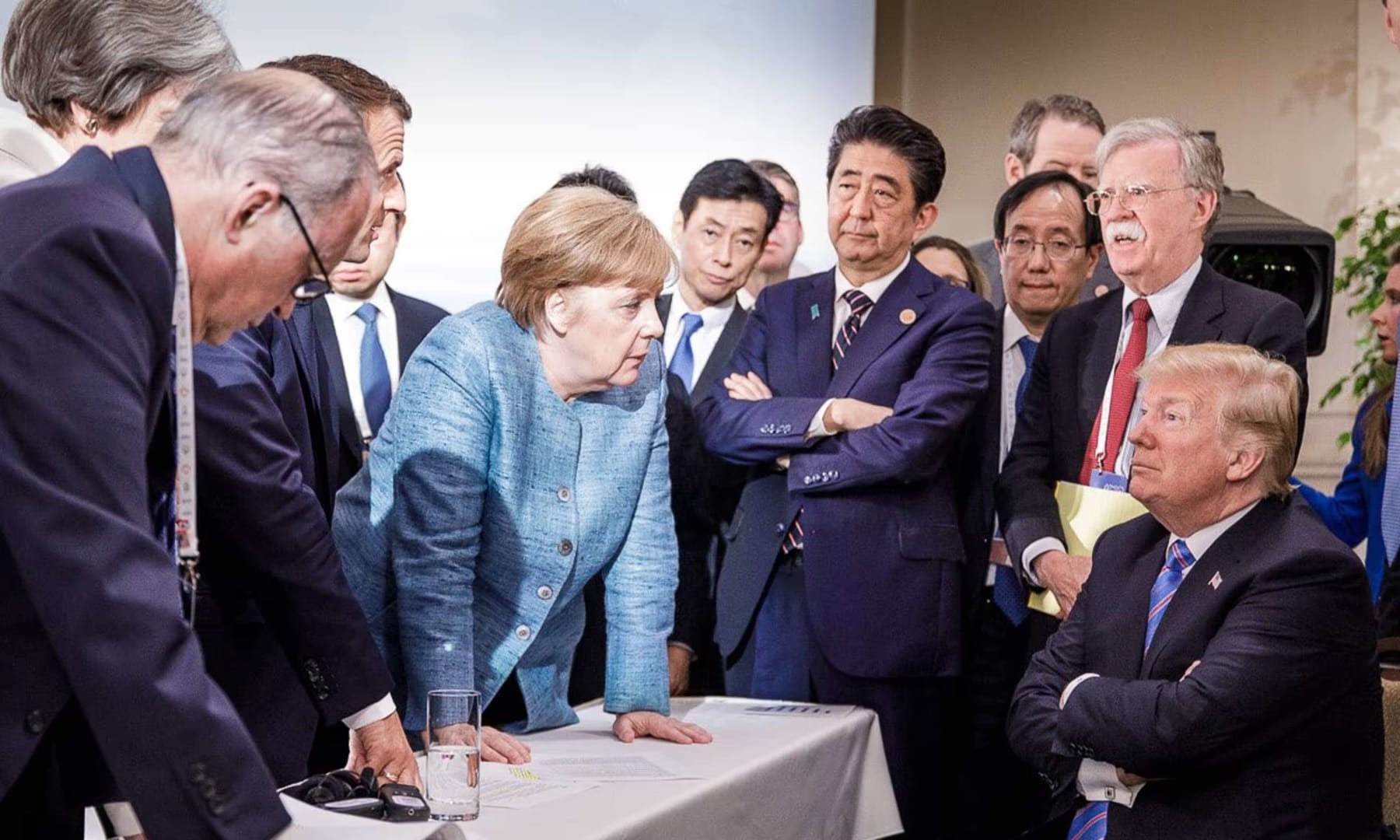Bottom Line Up Front
The G7 summit in Canada (June 15-17, 2025) ended in strategic failure as President Trump's early departure to address the Iran-Israel crisis disrupted critical negotiations, preventing agreements on Ukraine, Iran, and other pressing global issues.
Despite provisional agreements on critical minerals strategy and trade mechanisms, the summit exposed deep fractures in Western alliance cohesion at a pivotal geopolitical moment when unified response capabilities are essential.
Trump's inflammatory rhetoric regarding Canadian statehood and Greenland acquisition created unprecedented bilateral tensions, undermining traditional diplomatic norms and alliance trust.
The summit's limited outcomes signal a potential shift from multilateral consensus-building to bilateral crisis management, fundamentally altering how Western democracies coordinate responses to global challenges.
The 2025 G7 summit in Canada was intended to demonstrate Western unity amid escalating global crises. Instead, it became a stark illustration of alliance fragmentation when coordinated leadership is most critically needed. The summit's abrupt disruption and failure to achieve consensus on major security issues represents a significant intelligence concern for Western strategic coordination capabilities.
President Trump's decision to leave the summit a day early to address the Iran-Israel conflict highlighted the tension between multilateral diplomacy and unilateral crisis response. While crisis management often requires rapid, decisive action, the timing disrupted carefully planned negotiations on Ukraine support, Iran sanctions coordination, and broader Middle East strategy. This pattern suggests potential challenges in maintaining alliance solidarity during simultaneous, escalating crises.
The summit's economic outcomes, while limited, revealed both opportunities and vulnerabilities in Western strategic coordination. Leaders provisionally agreed on a critical minerals strategy designed to counter China's dominance in rare earth elements, a significant development for economic security. The establishment of an Economic and Trade Working Group and deepening of trade continuity agreements demonstrate continued commitment to economic integration. However, these modest achievements were overshadowed by the failure to address more pressing security challenges.
Most concerning from an intelligence perspective was the complete breakdown in consensus-building on Ukraine and Iran. Six of seven leaders discussed these critical issues extensively but failed to reach any major agreements after Trump's departure. This represents a fundamental failure of the G7's primary function as a coordination mechanism for Western responses to global crises. The inability to present a unified position on two of the most significant security challenges facing the alliance has profound implications for deterrence credibility and strategic messaging.
The bilateral tensions between the United States and Canada added another layer of complexity to alliance dynamics. Trump's repeated suggestions that Canada become the 51st U.S. state, coupled with similar rhetoric regarding Greenland, represent unprecedented diplomatic provocations between NATO allies. Canadian Prime Minister Carney's firm rejection of these overtures during their previous White House meeting set the stage for underlying tensions that permeated summit discussions.
From a strategic intelligence standpoint, these developments suggest several concerning trends. First, the traditional G7 consensus-building model appears increasingly inadequate for addressing rapid-evolving, multi-theater crises. The summit's failure occurred precisely when Western coordination was most needed, amid active conflicts in Ukraine and the Middle East, escalating U.S.-China tensions, and growing concerns about alliance cohesion under changing U.S. leadership.
Second, the early departure pattern establishes a problematic precedent for future multilateral engagements. If crisis management consistently takes precedence over alliance coordination, the fundamental architecture of Western diplomatic cooperation may require restructuring. This could accelerate the shift from multilateral to bilateral crisis management, potentially weakening collective response capabilities.
Third, the bilateral tensions with Canada, traditionally one of America's most reliable allies, signal broader challenges in maintaining alliance cohesion under current U.S. leadership approaches. If similar tensions emerge with other key allies, it could fundamentally alter NATO's internal dynamics and operational effectiveness.
The summit's limited outcomes also have significant implications for adversary calculations. Russia, China, and Iran likely view the G7's failure to achieve consensus as validation of their strategies to exploit Western divisions. The inability to coordinate responses to Ukraine and Iran may encourage further testing of Western resolve and unity.
Looking ahead, the intelligence community must assess whether this represents a temporary disruption or a fundamental shift in Western alliance architecture. The upcoming NATO summit in The Hague will provide critical insights into whether alliance members can restore coordination mechanisms or whether they must adapt to a more fragmented approach to collective security.
The economic agreements, while positive, cannot compensate for the strategic coordination failures. Critical minerals cooperation is important for long-term competitiveness with China, but immediate security challenges require more urgent, coordinated responses that the current G7 framework appears unable to deliver.
For intelligence planning purposes, the summit suggests that Western responses to global crises may increasingly rely on smaller coalitions or bilateral arrangements rather than comprehensive multilateral coordination. This shift could create both opportunities and vulnerabilities that require careful monitoring and assessment.
The G7's traditional role as the premier forum for Western strategic coordination faces an uncertain future. Without significant adaptation to address the challenges exposed in Canada, the alliance risks further fragmentation precisely when global threats demand greater unity and coordination.

